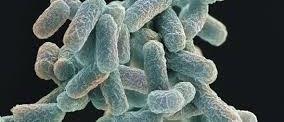Gingivitis is simply defined as the inflammation of the gum (gingivae) caused by microbial activity. It is the redness and swelling of the gingival tissues or gum as a result of bacterial infection. Gingivitis is mediated by oral bacteria including Fusobacterium species, Bacteroides, Entamoeba gingivalis, Prevotella species, Bacillus intermedius, Capnocytophaga species, Veillonella speciesand Actinomyces species. The microorganism’s responsible for initiating gingivitis release toxins and enzymes, which can bring about immunological response that culminate to the inflammation of the gingivae (gum).
Gingivitis can be acute or chronic in occurrence depending on the level of the microbial infection, and it does not bring about a permanent loss or destruction of any of the dental structures as is applicable in other forms of dental infection such as in periodontitis or dental caries (decay). The clinical features of chronic gingivitis include swelling of the gum, bleeding of the gum, halitosis, and change in the colour of the teeth.
Chronic gingivitis does not usually result in the movement of the teeth, and affected patients rarely experience tooth ache. Acute gingivitis unlike chronic gingivitis (whose clinical episodes last for a very long time) occurs sporadically and it is usually severe and does not lead to a protracted illness in the affected individual. Acute traumatic gingivitis (ATG), acute necrotizing gingivitis (ANG), and acute allergic gingivitis (AAG) are the major forms of acute gingivitis in humans.
While acute traumatic gingivitis (ATG) usually arises as a result of a trauma/injury to the gingivae (gum), the acute necrotizing gingivitis (ANG) normally occurs in patients whose immune system has been compromised. Oral bacteria in the oral cavity of patients with compromised immune system can easily become pathogenic and cause acute necrotizing gingivitis. ATG can also occur by using hard tooth brush to brush the teeth especially one that is too tough and can cause damage to the gingivae.
The unnecessary use of hot water can also predispose an individual to developing ATG. Acute traumatic gingivitis is self-limiting and thus the dental condition can heal with time without any prior medication or visit to the dentist for medical attention. Acute allergic gingivitis (AAG) is usually caused by hypersensitivity reactions of the teeth that may be due to the constituents of the type of tooth pastes used or other cosmetics that enters the oral cavity. AAG can cause oral ulceration such as glossitis (inflammation of the surface of the tongue) and cheilitis (inflammation of the lips).
References
Barrett J.T (1998). Microbiology and Immunology Concepts. Philadelphia, PA: Lippincott-Raven Publishers. USA.
Beck, J. D., Slade, G. and Offenbacher, S. (2000). Oral disease, cardiovascular disease and systemic inflammation. Periodontol, 23, 110-20.
Beers M.H., Porter R.S., Jones T.V., Kaplan J.L and Berkwits M (2006). The Merck Manual of Diagnosis and Therapy. Eighteenth edition. Merck & Co., Inc, USA.
Brooks G.F., Butel J.S and Morse S.A (2004). Medical Microbiology, 23rd edition. McGraw Hill Publishers. USA.
Champoux J.J, Neidhardt F.C, Drew W.L and Plorde J.J (2004). Sherris Medical Microbiology: An Introduction to Infectious Diseases. 4th edition. McGraw Hill Companies Inc, USA.
Davey M.E and O’toole G.A (2000). Microbial biofilms: from ecology to molecular genetics. Microbiol. Mol. Biol. Rev, 64, 847-867.
Gillespie S.H and Bamford K.B (2012). Medical Microbiology and Infection at a glance. 4th edition. Wiley-Blackwell Publishers, UK.
Jenstch, H., Pornowski, R., Kundi, G. and Gocke, R. (2003). Treatment of gingivitis with hyaluronan. J. Clin. Periodontol.,30, 159-164.
Mayooran B, Robin S and John R.T (2000). Dental caries is a preventable infectious disease. Aust. Dent. J, 45, 235-245.
Trahan L.X (1995). A review of its action on mutans streptococci and dental plaque–its clinical significance. Int. Dent. J, 45, 77-92.
Warren L (2008). Review of Medical Microbiology and Immunology. Tenth edition. McGraw Hill Companies Inc, USA.
Wilson B. A, Salyers A.A, Whitt D.D and Winkler M.E (2011). Bacterial Pathogenesis: A molecular Approach. Third edition. American Society of Microbiology Press, USA.
Discover more from #1 Microbiology Resource Hub
Subscribe to get the latest posts to your email.



